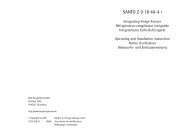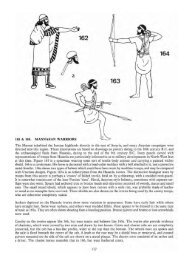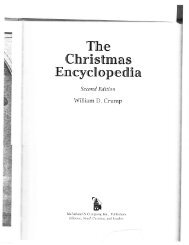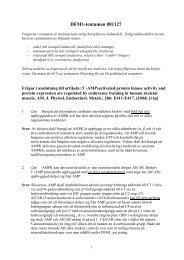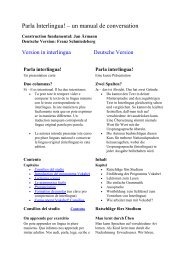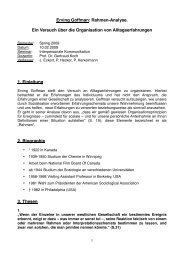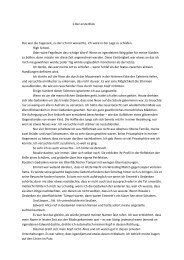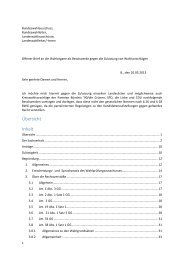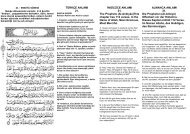lwIP - A Minimal TCP/IP implementation - Wikia
lwIP - A Minimal TCP/IP implementation - Wikia
lwIP - A Minimal TCP/IP implementation - Wikia
You also want an ePaper? Increase the reach of your titles
YUMPU automatically turns print PDFs into web optimized ePapers that Google loves.
10 <strong>TCP</strong> PROCESSING 10.3 Sequence number calculations<br />
The function pointer recv and recv arg are used when passing received data to the application<br />
layer. The three queues unsent, unacked and ooseq are used when sending and receiving data.<br />
Data that has been received from the application but has not been sent is queued in unsent and<br />
data that has been sent but not yet acknowledged by the remote host is held in unacked. Received<br />
data that is out of sequence is buffered in ooseq.<br />
struct tcp_seg {<br />
struct tcp_seg *next;<br />
u16_t len;<br />
struct pbuf *p;<br />
struct tcp_hdr *tcphdr;<br />
void *data;<br />
u16_t rtime;<br />
};<br />
Figure 11. The tcp seg structure<br />
The tcp seg structure in Figure 11 is the internal representation of a <strong>TCP</strong> segment. This<br />
structure starts with a next pointer which is used for linking when queuing segments. The len<br />
field contains the length of the segment in <strong>TCP</strong> terms. This means that the len field for a data<br />
segment will contain the length of the data in the segment, and the len field for an empty segment<br />
with the SYN or FIN flags set will be 1. The pbuf p is the buffer containing the actual segment and<br />
the tcphdr and data pointers points to the <strong>TCP</strong> header and the data in the segment, respectively.<br />
For outgoing segments, the rtime field is used for the retransmission time-out of this segment.<br />
Since incoming segments will not need to be retransmitted, this field is not needed and memory<br />
for this field is not allocated for incoming segments.<br />
10.3 Sequence number calculations<br />
The <strong>TCP</strong> sequence numbers that are used to enumerate the bytes in the <strong>TCP</strong> byte stream are<br />
unsigned 32 bit quantities, hence in the range [0, 2 32 − 1]. Since the number of bytes sent in a<br />
<strong>TCP</strong> connection might be more than the number of 32-bit combinations, the sequence numbers<br />
are calculated modulo 2 32 . This means that ordinary comparison operators cannot be used with<br />
<strong>TCP</strong> sequence numbers. The modified comparison operators, called < seq and > seq , are defined<br />
by the relations<br />
s< seq t ⇔ s − t seq t ⇔ s − t>0,<br />
where s and t are <strong>TCP</strong> sequence numbers. The comparison operators for ≤ and ≥ are defined<br />
equivalently. The comparison operators are defined as C macros in the header file.<br />
10.4 Queuing and transmitting data<br />
Data that is to be sent is divided into appropriate sized chunks and given sequence numbers by the<br />
tcp enqueue() function. Here, the data is packeted into pbufs and enclosed in a tcp seg structure.<br />
The <strong>TCP</strong> header is build in the pbuf, and filled in with all fields except the acknowledgment<br />
number, ackno, and the advertised window, wnd. These fields can change during the queuing<br />
time of the segment and are therefore set by tcp output() which does the actual transmission of<br />
the segment. After the segments are built, they are queued on the unsent list in the PCB. The<br />
tcp enqueue() function tries to fill each segment with a maximum segment size worth of data and<br />
when an under-full segment is found at the end of the unsent queue, this segment is appended<br />
with the new data using the pbuf chaining functionality.<br />
12



